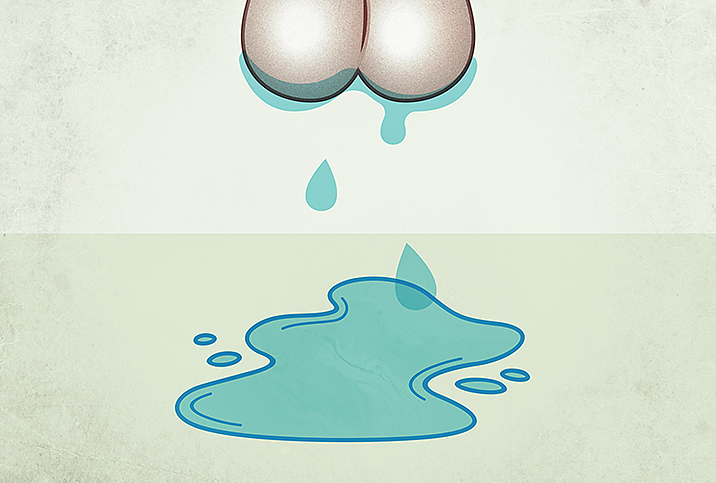Detecting the Rare: Penile Cancer Diagnosis and Treatment

What if we said you had a 1 in 100,000 chance of something unpleasant happening to you? Not bad, right? What if we added that the 0.0001 percent chance was for something that might happen to your penis? That's going to get your attention, right? Now the chance seems a little higher even though it stayed the same.
Penile cancer is the "something." It is a very rare type of cancer—accounting for less than 1 percent of all cancers in U.S. men—and it typically affects only men older than 50 or 60. However, like all other cancers, it's important to recognize, particularly because its symptoms are almost impossible to miss.
Healthcare organizations have no universal recommendations for penile cancer screenings, but fortunately, it can often be detected early because of visible symptoms. Given an early diagnosis and treatment, localized penile cancer has a relative five-year survival rate of 80 percent. The rate drops drastically if the cancer has spread to other parts of the body.
The key is detecting it early, so it's important to be aware of the signs and symptoms.
Symptoms are easy to spot
The somewhat good news about penile cancer is the symptoms are easy to identify. Unlike other forms of cancer that can grow silently and internally, penile cancer primarily presents as an external, very visible growth, said S. Adam Ramin, M.D., a urologist and the medical director of Urology Cancer Specialists in Los Angeles.
Prepare yourself: Details are going to get a bit graphic.
Most men with penile cancer don't seek medical attention primarily due to pain; it's the very visible redness and mass in the head of the penis they notice first.
Ramin explained penile cancer typically begins as a red, "beefy-looking" change that starts in the head of the penis. From there, as the tumor grows, it becomes quite grotesque. Ramin described it as a "fungating mass" that resembles a fungal ball on the penis. If that wasn't bad enough, there's also an odor, which he noted is "really bad" and "foul-smelling."
The tumor can grow to take over the length of the entire penis and, eventually, will have both black and white chunks of skin on it that will slough off and even bleed in some areas.
Other symptoms of penile cancer can include:
- Change in the appearance of the skin on the penis
- Swelling at the tip of the penis
- A lump on the penis
- A sore that may bleed on the penis
- Rash, fluid or bleeding under the foreskin
- Smelly discharge
- Swollen lymph nodes
- Small, crusty bumps
- Flat growths
While you might be right that this sounds extremely painful, most men with penile cancer don't seek medical attention primarily due to pain, according to Ramin. Instead, it's the very visible redness and mass in the head of the penis they notice first.
Know your risk factors
Because penile cancer is rare, being aware of your risk factors is crucial, noted Joshua Gonzalez, M.D., a board-certified urologist and sexual health advisor with Astroglide, a lubricant manufacturer. The single best way to reduce the chances of getting penile cancer is to avoid known risk factors, according to Gonzalez.
However, some factors are unavoidable. For instance, penile cancer is more prevalent in men who live in parts of Asia, Africa and South America. That being said, other factors are more manageable, and knowing them will at least bring an added awareness.
The major risk factor for penile cancer is having an uncircumcised penis.
"Almost no one with a circumcision develops penile cancer," Ramin said. "Close to 100 percent of men who develop penile cancer have not been circumcised."
Ramin doesn't recommend routine circumcision specifically as a way to lower the risk of penile cancer, but if you aren't circumcised, it's important to be aware of the correlation, and regularly inspect and clean under the foreskin.
Other risk factors for penile cancer include:
- Diabetes
- Chronic or recurrent balanitis, an irritation of the penis that is more common in uncircumcised males
- Human papillomavirus (HPV) infections of the penis
- Smoking
- Being older than age 55
- Having AIDS or other conditions that cause immunosuppression
Options for treatment
Treatment for penile cancer depends on the stage. To determine the stage, Gonzalez explained the doctor would take a biopsy of the suspicious tissue and possibly use additional diagnostic tools, such as computed tomography (CT) scans, ultrasounds or magnetic resonance imaging (MRI).
Once the stage and extent of the cancer have been determined, treatment options range from early-stage methods, such as laser ablation or cryotherapy, to more advanced steps, such as a penectomy—which, yes, involves removing the penis.
Ramin noted that in early-stage cases, the cancer can sometimes be resolved with a simple circumcision as well as the removal of the first layer of skin on the head of the penis. For more advanced cases, however, partial or complete removal of the penis may be necessary.
Chemotherapy and removal of pelvic and inguinal lymph nodes may also be part of the treatment course.
Getting diagnosed
Ramin pointed out that in some cases, due to overlapping symptoms, such as redness and irritation, penile cancer can be mistaken for an infection. A doctor may first prescribe a round of antibiotics to resolve the issue, and when that doesn't work, it's on to the next step. Typically, though, penile cancer tends to get diagnosed in the early stages because it is so physically apparent.
"However, there are a group of men who are in denial and refuse to see a doctor, and by the time they do, it's much too late," Ramin said.
Given an early diagnosis and treatment, localized penile cancer has a relative five-year survival rate of 80 percent.
If you want to survive penile cancer, you don't want to be one of those men—early detection matters. Ramin explained patients who have stage 1 or stage 2 penile cancer will have around an 85 percent to 95 percent chance of cure, while people who have stage 4 with metastasis, or spread, have less than a 15 percent chance of survival.
The moral of the story? If you notice any changes to the skin on your penis, find any lumps or have any reddened or irritated areas—especially in the head of the penis—be sure to visit a doctor for a checkup. Even though penile cancer is rare, it can still happen.
"Look for changes in the appearance of your penis," Gonzalez advised. "Examine regularly to assess for lumps and bumps. If you're uncircumcised, regularly retract and clean under the foreskin and examine the head of the penis to make sure it doesn't look different than you remember."




















